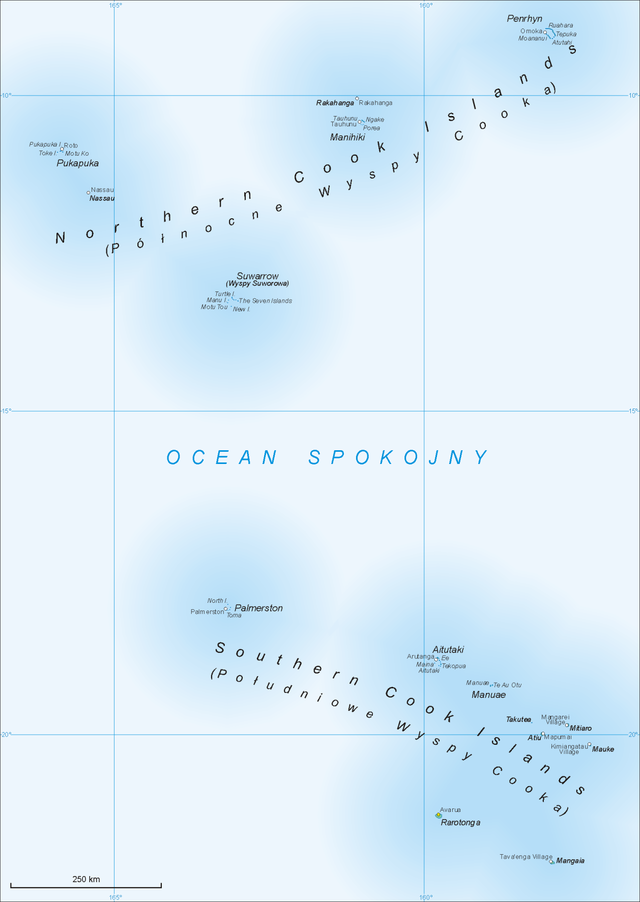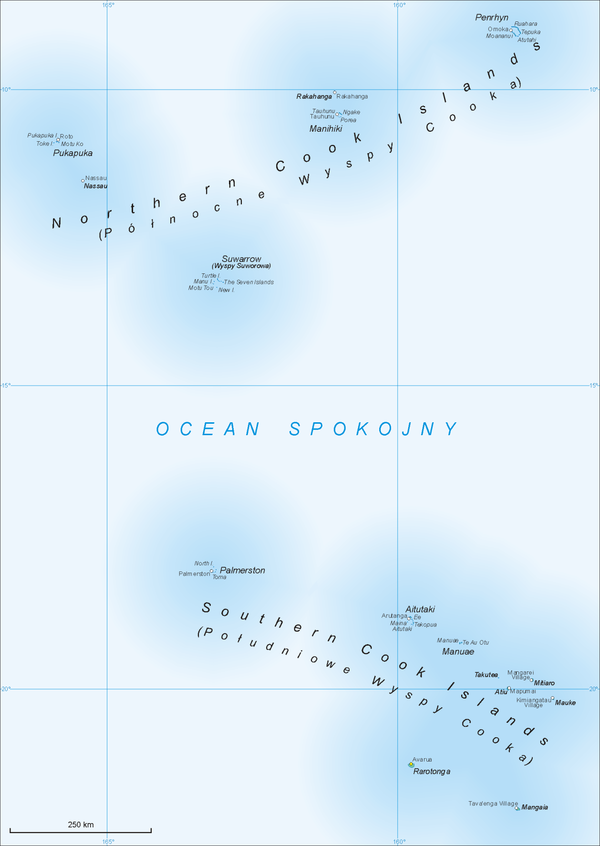Top Qs
Timeline
Chat
Perspective
Geography of the Cook Islands
From Wikipedia, the free encyclopedia
Remove ads

The Cook Islands is located in Oceania, in the South Pacific Ocean, about halfway between Hawaii and New Zealand. The country can be divided into two groups: the Southern Cook Islands and the Northern Cook Islands. Rarotonga in the southern group is the main island. All the other islands are known collectively as the Pa Enua or Outer Islands.
The land areas of the southern islands range in size up to the 67-square-kilometre (26 sq mi) Rarotonga, while none of the northern islands are bigger than 10 square kilometres (3.9 sq mi). The most populous islands are Rarotonga with a population of 11,000 and Aitutaki with 1,800; none of the other islands have more than 500, and a few are uninhabited.
Two terrestrial ecoregions lie within the Cook Islands territory: the Central Polynesian tropical moist forests and the Cook Islands tropical moist forests.[1] From December through to March, the islands are in the path of tropical cyclones, the most notable of which were cyclones Martin (1997) and Percy (2005).[2]
Remove ads
Islands and reefs
The table is ordered from north to south, but can be re-ordered by any column. Figures are from the 2021 census.[3]
Remove ads
Statistics
- Area
-
- Land: 237 km2 (92 sq mi)
- Area - comparative
- 1.3 times the size of Washington, DC
- Coastline
- 120 km (75 mi)
- Maritime claims
-
- Territorial sea: 12 nmi (22.2 km; 13.8 mi)
- Continental shelf: 200 nmi (370.4 km; 230.2 mi) or to the edge of the continental margin
- Exclusive economic zone: 200 nmi (370.4 km; 230.2 mi)
- Climate
- Tropical; moderated by trade winds; a dry season from April to November and a more humid season from December to March
- Terrain
- Low coral atolls in north; volcanic, hilly islands in south
- Elevation extremes
-
- Lowest point: Pacific Ocean 0 m
- Highest point: Te Manga 652 m (2,139 ft)
- Natural resources
- coconuts
- fresh water
- Land use
-
- Arable land: 4.17%
- Permanent crops: 4.17%
- Other: 91.67% (2012 est.)
- Natural hazards
- Typhoons (November to March)
- Tsunamis (Year-round)
- Time Zone
- UTC -10 (GMT -10)
- Environment - international agreements
- Party to: Biodiversity, Climate Change-Kyoto Protocol, Desertification, Hazardous Wastes, Law of the Sea, Ozone Layer Protection
Remove ads
See also
References
External links
Wikiwand - on
Seamless Wikipedia browsing. On steroids.
Remove ads
